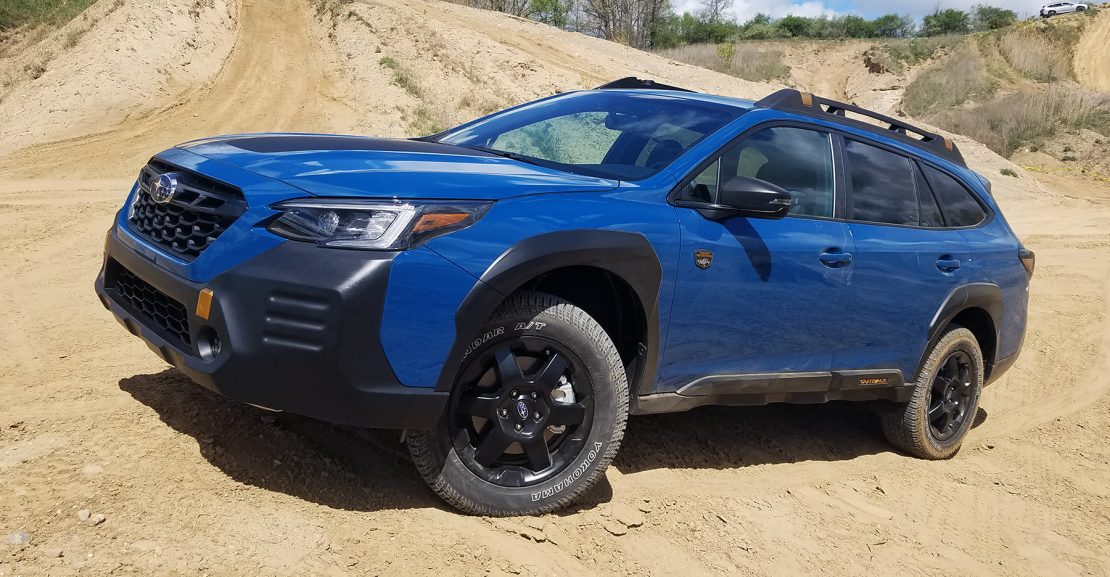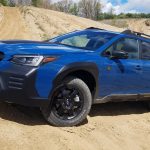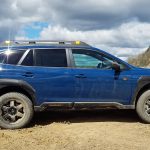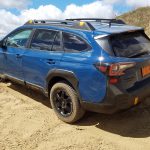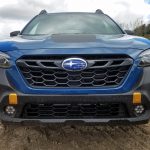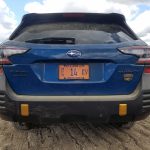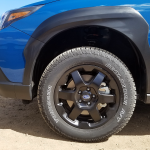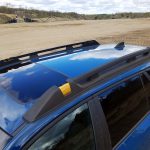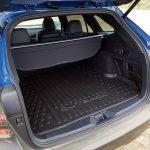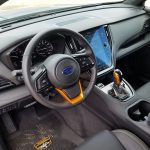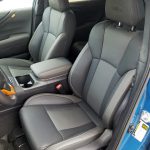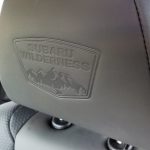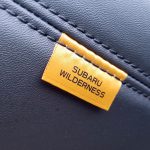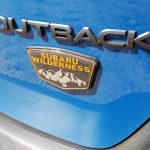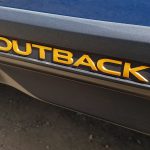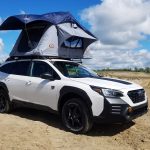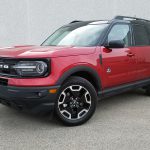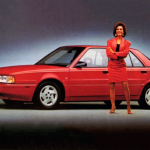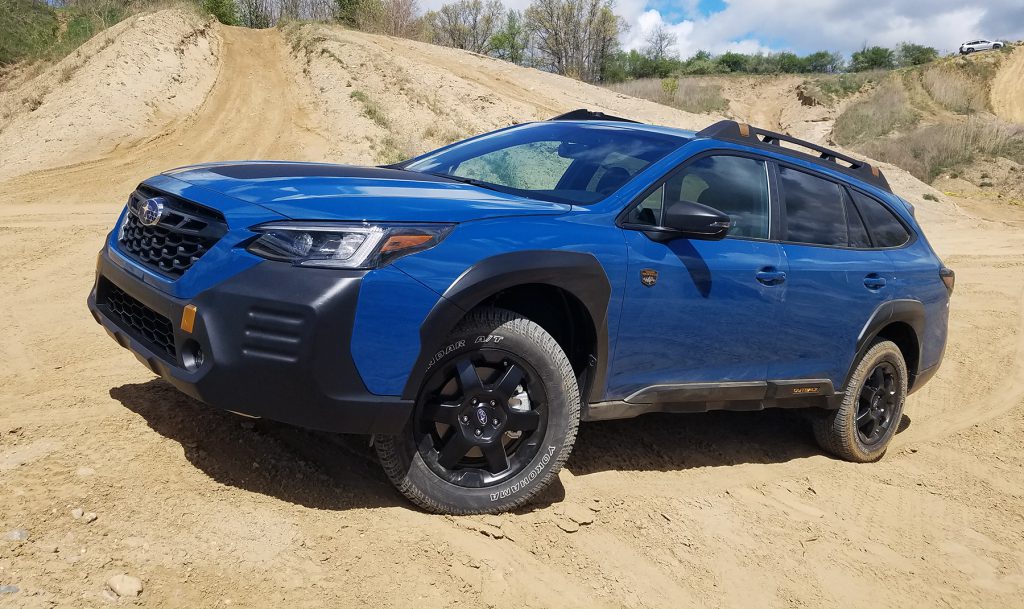
 The Subaru Outback essentially pioneered the concept of the modern SUV-flavored wagon when it debuted for the 1995 model year. Then as now, the Outback is based on a station-wagon version of Subaru’s Legacy midsize sedan. Its passenger-car roots give the Outback better on-road driving dynamics than the typical SUV, while the smart interior packaging, raised ride height, and standard all-wheel drive deliver SUV-worthy levels of passenger/cargo versatility and rough-terrain capability.
The Subaru Outback essentially pioneered the concept of the modern SUV-flavored wagon when it debuted for the 1995 model year. Then as now, the Outback is based on a station-wagon version of Subaru’s Legacy midsize sedan. Its passenger-car roots give the Outback better on-road driving dynamics than the typical SUV, while the smart interior packaging, raised ride height, and standard all-wheel drive deliver SUV-worthy levels of passenger/cargo versatility and rough-terrain capability.
2022 Subaru Outback Wilderness
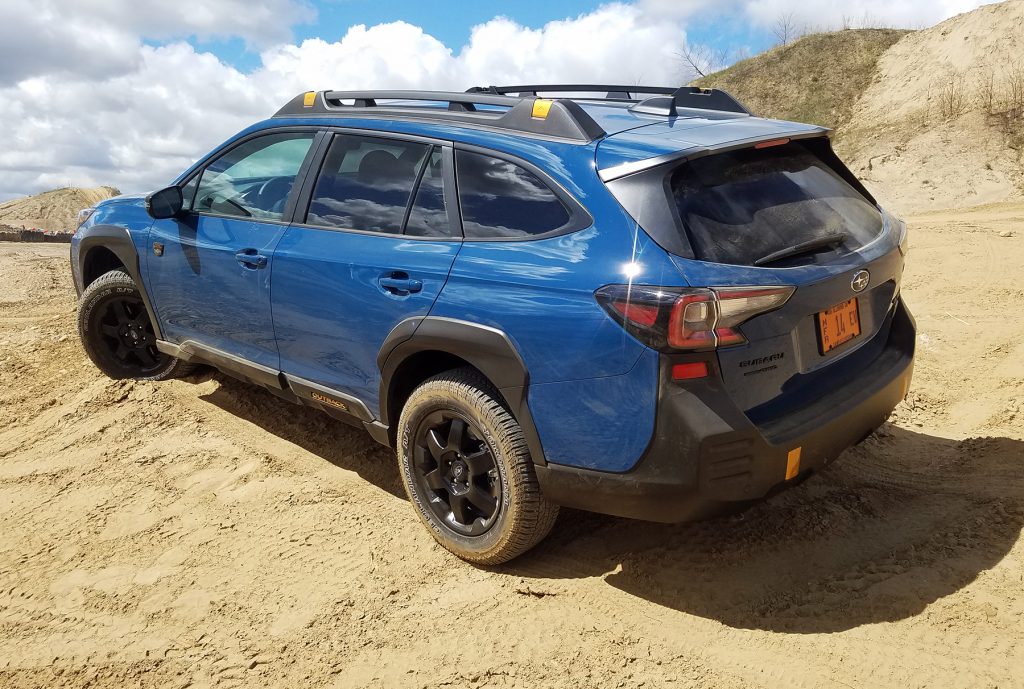
The Outback has long been a best-seller for Subaru, enjoying consistent marketplace success that other mainstream auto brands have never quite been able to replicate with similar passenger-car-based offerings (Buick Regal TourX and Volkswagen Golf AllTrack, we hardly knew ya). The Outback received an excellent redesign for the 2020 model year that brought welcome new features and netted a Consumer Guide Best Buy award—an honor that it retained for 2021.
Test Drive: 2021 Ford Bronco Sport Outer Banks
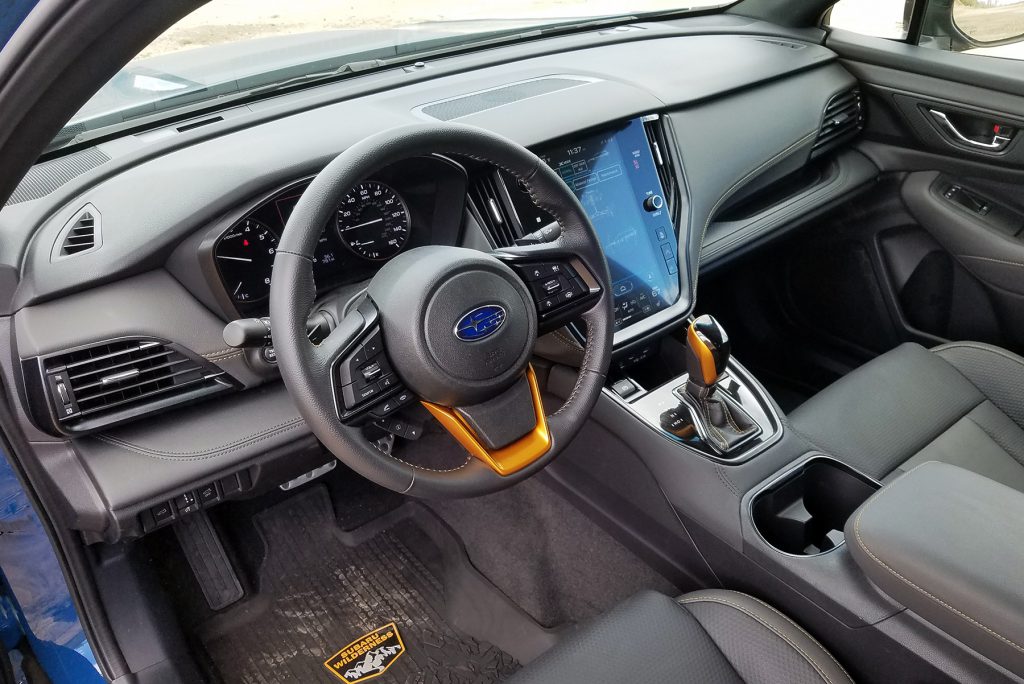
However, it obviously hasn’t escaped Subaru’s attention that a lot of today’s “soft-roader” all-terrain-focused crossover SUVs—which are frequently cross-shopped against the Outback—are getting a little less “soft.” Kia’s redesigned-for-2021 Sorento lineup includes a raised-ride-height, roof-rack-equipped X-Line model. Nissan’s promo materials for its redesigned-for-2022 Nissan Pathfinder (which is slated to go on sale this summer) show a beefy-looking forest-green model outfitted with a big roof rack, accessory lights, and knobby off-road tires. And, Ford just unveiled a new 2021 Explorer Timberline model (also slated to hit dealerships this summer) it calls the most off-road-capable Explorer ever.
Real-World Walk-around: 2021 Ford Bronco
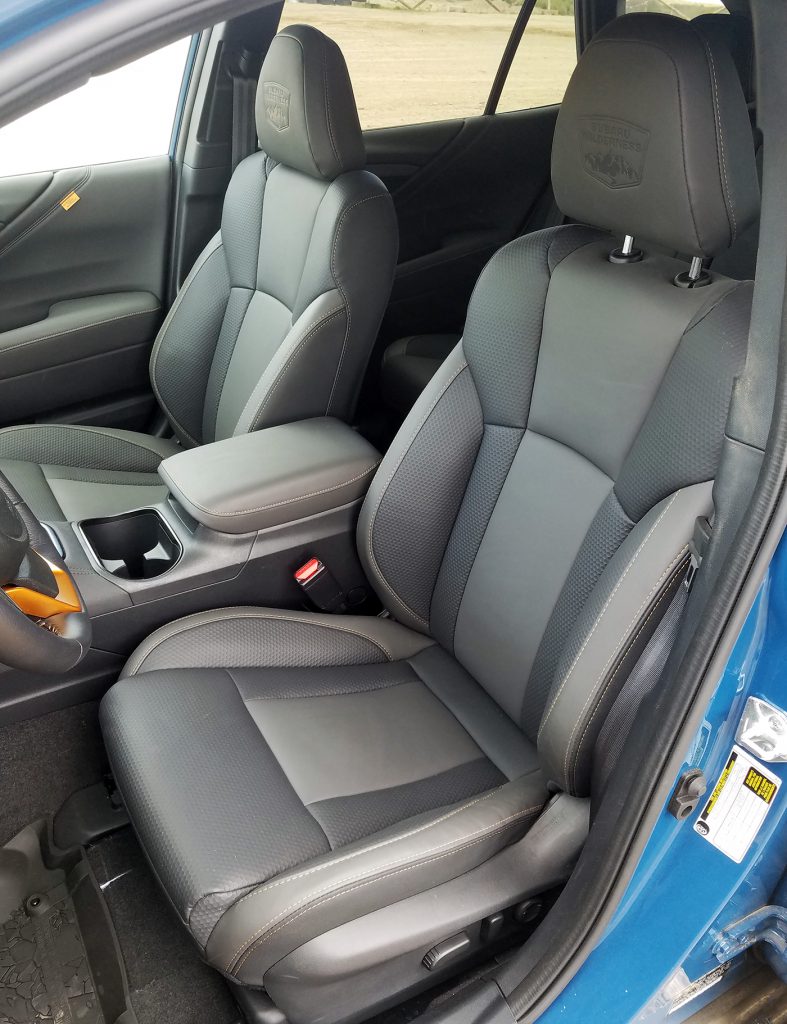
To stay in the thick of competition with these and other rivals, Subaru is rolling out an Outback-ier Outback: the new-for-2022 Outback Wilderness. The Wilderness model’s upgrades are aimed at enhancing the basic Outback’s off-road capability and giving it a more rugged, purpose-built look and feel. Though the differences aren’t quite as pronounced, the relationship of the Outback Wilderness to the rest of the Outback lineup is akin to the relationship of the high-performance Subaru WRX STI to the rest of the WRX lineup.
The Wilderness builds off of the Outback’s Onyx Edition XT trim level and adds a number of functional and cosmetic upgrades. The ride height is bumped up almost an inch—there’s 9.5 inches of minimum ground clearance, compared to 8.7 inches on the rest of the Outback lineup. That’s better than vehicles such as the Toyota RAV4 TRD Off Road (8.6 inches), Jeep Cherokee (8.7 inches) and Ford Bronco Sport (8.8 inches). By extension, the Wilderness’s raised ride height also improves its approach/departure and breakover angles by a couple degrees or so each as well. The suspension is tuned to compensate for the added ride height, and the transfer gear ratio and rear differential reduction ratio have been modified too.
The Wilderness comes solely with the Outback’s step-up engine choice: a turbocharged 2.4-liter 4-cylinder that makes 260 horsepower. The continuously variable transmission has been outfitted with a pressure sensor that Subaru says improves control accuracy at low speeds. A Wilderness-exclusive version of the Outback’s dual-function X-MODE all-wheel drive system allows the vehicle to switch automatically from Deep/Snow Mud and Snow/Dirt low-speed managed-drive settings to normal/high-speed driving mode.
Test Drive: 2020 Land Rover Defender 110 SE
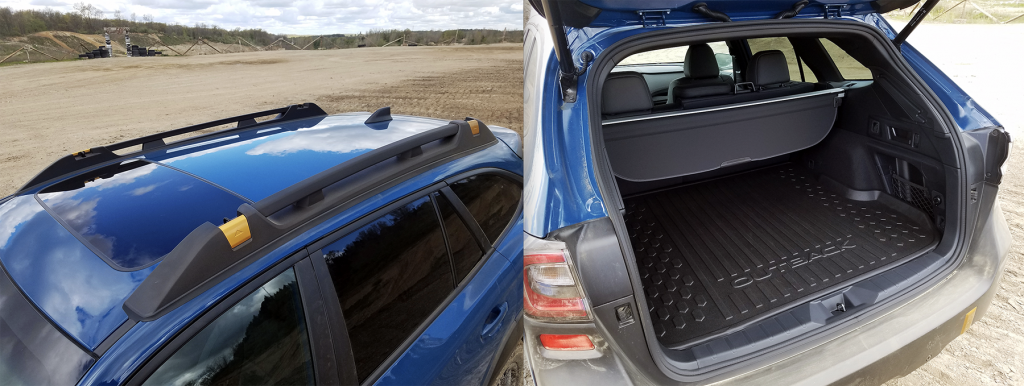
A host of exclusive exterior touches gives the Wilderness a look that stands out from other Outbacks. Starting up front, there’s a grille insert with a bold mesh-style pattern and a unique front fascia with more matte-black cladding, a front skid plate, and six-LED fog lights (which are recessed and mounted inboard, where they’re less likely to be damaged on an off-road trail). The hood wears an anti-glare matte-black graphic, and the window moldings are blacked out as well.
Test Drive: 2020 Toyota RAV4 TRD Off Road
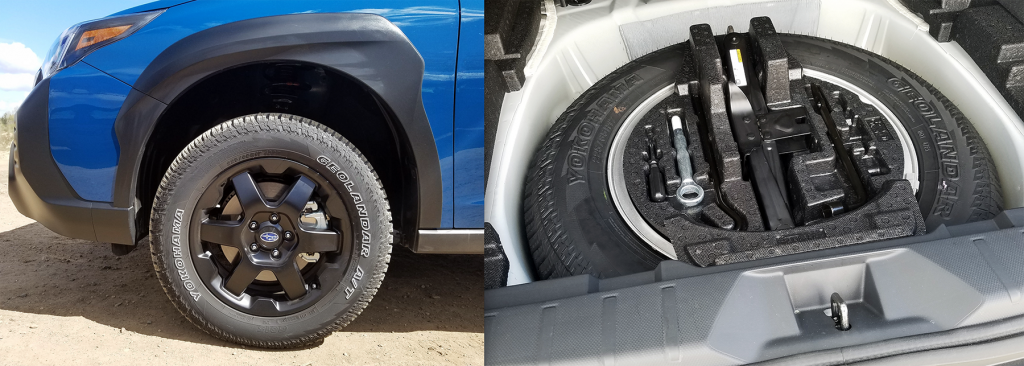
The bodyside overfender cladding is much larger, with a pronounced lip that should provide a bit more protection against scrapes and bumps when driving off-road. Subaru Wilderness badges adorn the front doors and rear liftgate, and the unique rear fascia includes (surprise!) beefed-up matte-black cladding and marker lights that are mounted above the protruding bumper area—again, where they’re less likely to be damaged. The blackout treatment extends to the 17-inch alloy wheels, which are mounted on Yokohama Geolandar AT white-letter all-terrain tires. The Wilderness’s spare is a full-size unit with the same Geolandar tire and a tire-pressure-monitor sensor, so it serves as a 1-for-1 swap should you damage a tire off-road.
Test Drive: 2020 Jeep Compass Trailhawk
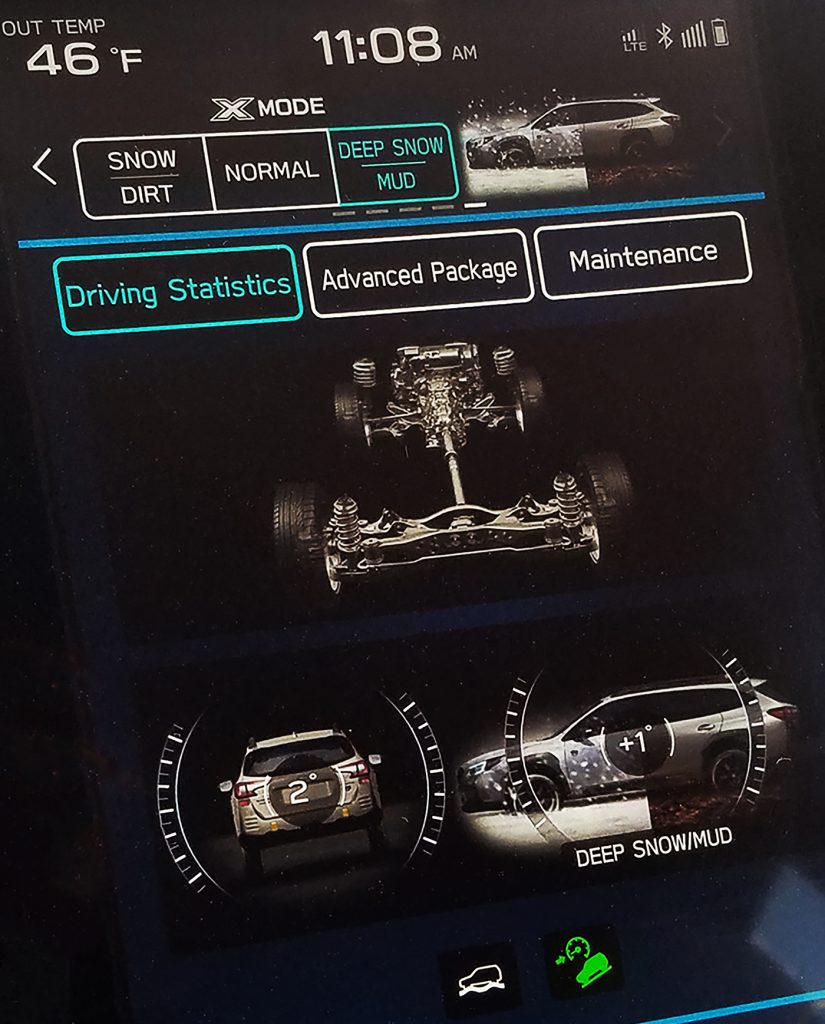
The fixed ladder-type roof rack is another Wilderness-exclusive feature—it can support a 220-pound dynamic load, or a 700-pound static load—enough to handle the weight of a roof-mounted tent and two average-sized adults. Anodized Copper covers mark the “use points” on the Wilderness’s exterior: the tie-down points on the roof rack, and the tow-hook covers on the front and rear fasciae. The Outback nameplate badges on the lower-body cladding also wear an Anodized Copper finish.
The Anodized Copper accents carry over to the interior, on the steering wheel, shift lever, and contrast stitching. Like the Onyx Edition, the Wilderness gets Subaru’s StarTex water-repellant upholstery, but in a unique “honeycomb” embossed pattern, with embossed Subaru Wilderness logos on the headrests. The black headliner helps hide tire scuffs and the like from, say, loading your mountain bike in the back, and a built-in LED light in the liftgate (similar to Ford’s new Bronco Sport) comes in handy if you’re loading or unloading after dark.
On a press-preview event, we sampled the Outback Wilderness on a street drive and at Holly Oaks ORV Park in Holly, Michigan, where we switched into the X-Mode’s Deep Snow/Mud setting and hit some fairly challenging gravel trails. Based on our on-road drives, the Wilderness’s off-road-focused upgrades come at no significant cost to its on-road refinement. Even with the further-raised ride height, the Outback delivers a car-like feel on the highway that’s a bit more composed than many similarly sized SUVs—particularly those that have similar off-road chops. The Geolandar tires generate a bit more road noise, but we didn’t find it intrusive.
Quick Spin: 2020 Subaru Outback Touring XT
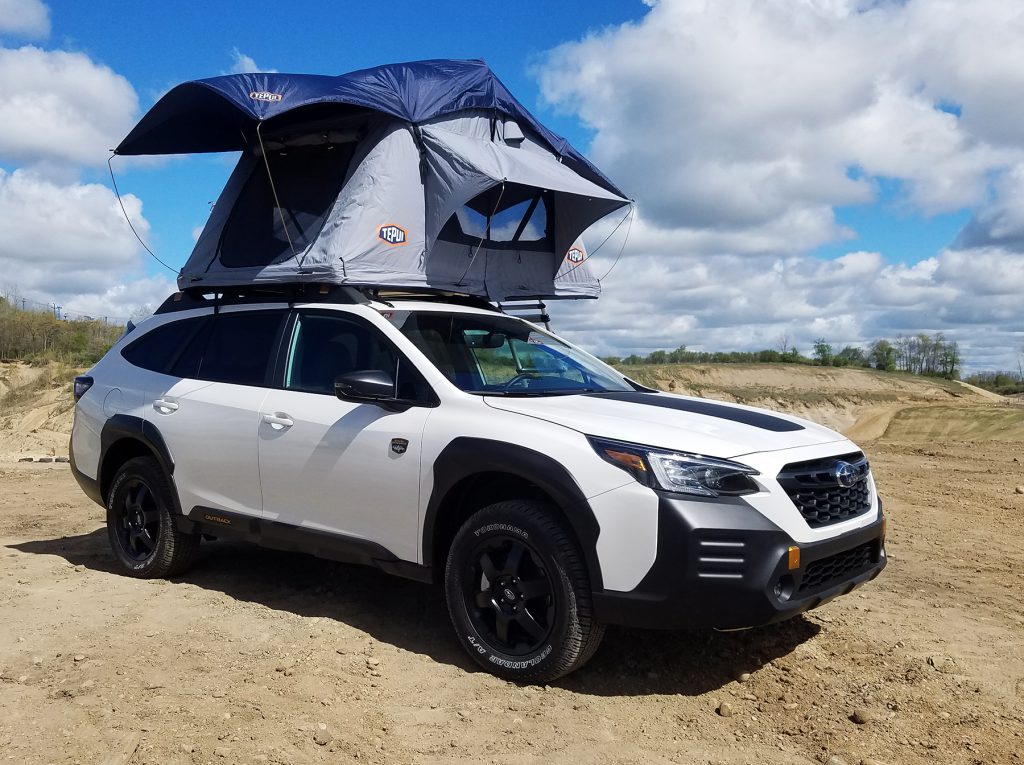
At the off-road park, we ably climbed up some hills that had the nose of the car pointed at the sky (and made us thankful for the standard 180-degree front-view monitor, which can be brought up on demand by pressing a button on the center console). The Wilderness tackled that terrain just fine, though we occasionally found the throttle pedal a bit touchy and tricky to modulate when traversing pronounced ruts and bumps. We also negotiated a few steep descents that gave the standard hill descent control and low-speed/low-ratio gradient control as workout (along with our seatbelt’s shoulder strap), and the Wilderness handled those with aplomb.
Subaru says its consumer research shows that for Outback owners, off-road driving is a means to an end—getting to remote places for camping, fishing, mountain biking, etc.—rather than the main goal itself. As such, daily-driver practicality and tractability are important to Outback buyers, and the Wilderness does a fine job of maintaining these traits while delivering a higher level of rough-terrain capability. Furthermore, the Wilderness’s upgrades are more refined and better integrated into the basic vehicle than any similar aftermarket modifications could be.
Test Drive: 2020 Subaru Outback Onyx Edition XT
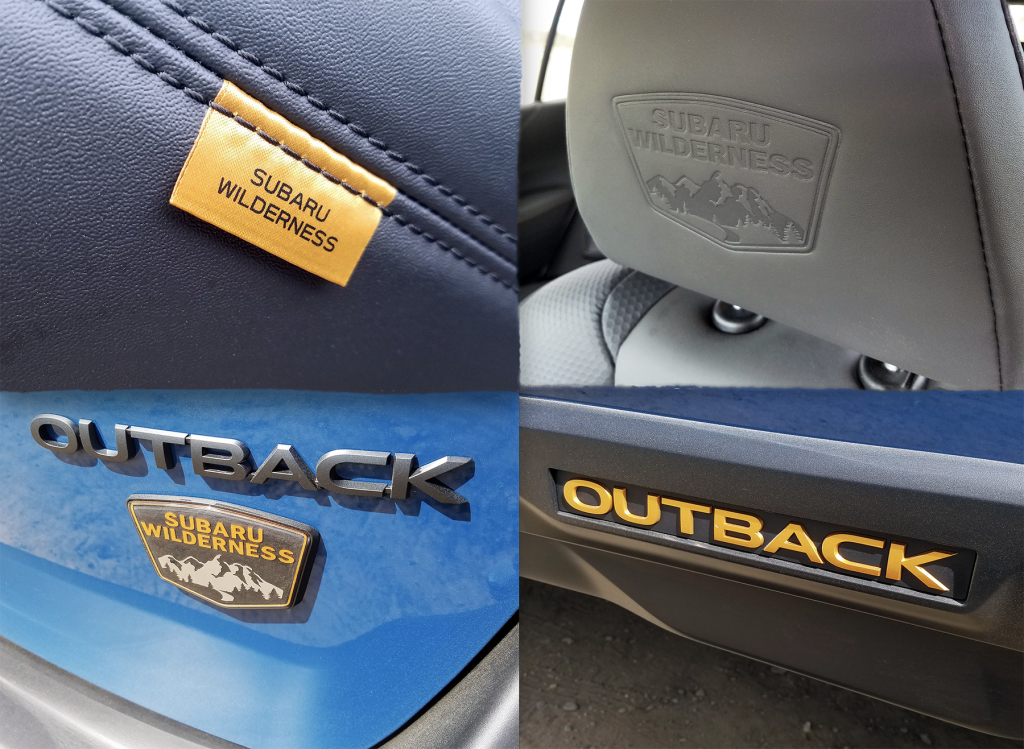
The Outback Wilderness starts at $36,995, sans the $1125 destination fee—that’s $1850 more than the Onyx Edition XT. The only factory option is a $1845 package that adds a power sunroof, STARLINK 11.6-inch multimedia system with navigation, and Reverse Automatic Braking. That’s a reasonable premium for the amount of added content, though you’ll also take a hit in fuel economy: The Wilderness is EPA-rated at 22 mpg city/26 highway/24 combined, compared to 23/30/26 for the other turbo-engine Outback models.
Even so, we’d wager that Subaru will have no problem hitting its projected number of Wilderness sales: 10-20 percent of the total 2022 Outback output. In fact, we wouldn’t be surprised at all to see the Wilderness nameplate blossom into a full sub-brand within the Subaru lineup, with the Forester and Crosstrek being prime candidates to receive the treatment.
Test Drive: 2020 Jeep Gladiator Mojave
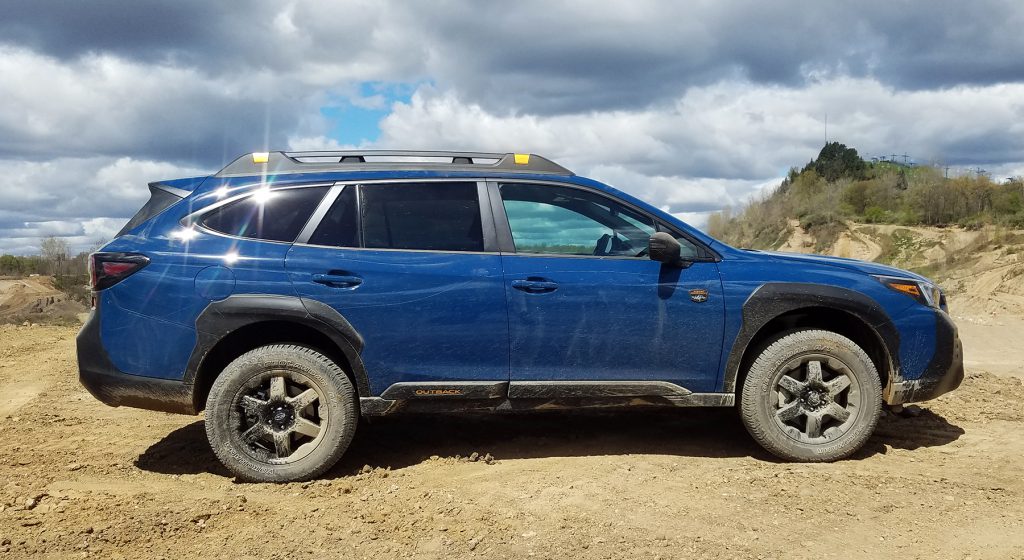
Listen to the very entertaining Consumer Guide Car Stuff Podcast
2022 Subaru Outback Wilderness
(Click below for enlarged images)
2022 Subaru Outback Wilderness
2022 Subaru Outback Wilderness

